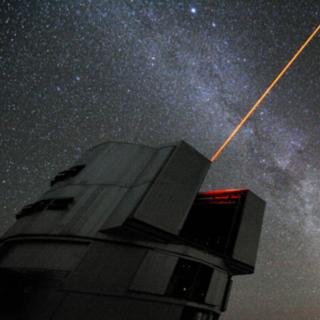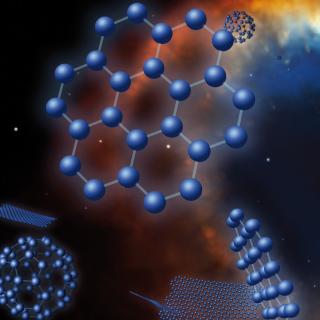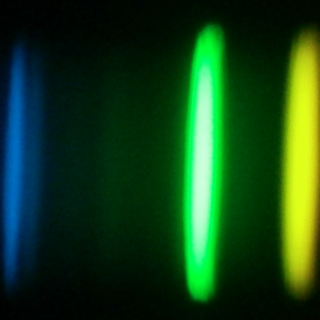Fernández-Trincado, J. G.; Zamora, O.; García-Hernández, D. A.; Souto, Diogo; Dell'Agli, F.; Schiavon, R. P.; Geisler, D.; Tang, B.; Villanova, S.; Hasselquist, Sten; Mennickent, R. E.; Cunha, Katia; Shetrone, M.; Allende Prieto, C.; Vieira, K.; Zasowski, G.; Sobeck, J.; Hayes, C. R.; Majewski, S. R.; Placco, V. M.; Beers, T. C.; Schleicher, D. R. G.; Robin, A. C.; Mészáros, Sz.; Masseron, T.; García Pérez, Ana E.; Anders, F.; Meza, A.; Alves-Brito, A.; Carrera, R.; Minniti, D.; Lane, R. R.; Fernández-Alvar, E.; Moreno, E.; Pichardo, B.; Pérez-Villegas, A.; Schultheis, M.; Roman-Lopes, A.; Fuentes, C. E.; Nitschelm, C.; Harding, P.; Bizyaev, D.; Pan, K.; Oravetz, D.; Simmons, A.; Ivans, Inese I.; Blanco-Cuaresma, S.; Hernández, J.; Alonso-García, J.; Valenzuela, O.; Chanamé, J.
Bibliographical reference
The Astrophysical Journal Letters, Volume 846, Issue 1, article id. L2, 8 pp. (2017).
Advertised on:
9
2017
Citations
78
Refereed citations
73
Description
We report the peculiar chemical abundance patterns of 11 atypical Milky
Way (MW) field red giant stars observed by the Apache Point Observatory
Galactic Evolution Experiment (APOGEE). These atypical giants exhibit
strong Al and N enhancements accompanied by C and Mg depletions,
strikingly similar to those observed in the so-called second-generation
(SG) stars of globular clusters (GCs). Remarkably, we find low Mg
abundances ([Mg/Fe] < 0.0) together with strong Al and N
overabundances in the majority (5/7) of the metal-rich ([Fe/H] ≳
-1.0) sample stars, which is at odds with actual observations of
SG stars in Galactic GCs of similar metallicities. This chemical pattern
is unique and unprecedented among MW stars, posing urgent questions
about its origin. These atypical stars could be former SG stars of
dissolved GCs formed with intrinsically lower abundances of Mg and
enriched Al (subsequently self-polluted by massive AGB stars) or the
result of exotic binary systems. We speculate that the stars
Mg-deficiency as well as the orbital properties suggest that they could
have an extragalactic origin. This discovery should guide future
dedicated spectroscopic searches of atypical stellar chemical patterns
in our Galaxy, a fundamental step forward to understanding the Galactic
formation and evolution.
Related projects

Galaxy Evolution in the Local Group
Galaxy formation and evolution is a fundamental Astrophysical problem. Its study requires “travelling back in time”, for which there are two complementary approaches. One is to analyse galaxy properties as a function of red-shift. Our team focuses on the other approach, called “Galactic Archaeology”. It is based on the determination of galaxy
Emma
Fernández Alvar

Traces of Galaxy Formation: Stellar populations, Dynamics and Morphology
We are a large, diverse, and very active research group aiming to provide a comprehensive picture for the formation of galaxies in the Universe. Rooted in detailed stellar population analysis, we are constantly exploring and developing new tools and ideas to understand how galaxies came to be what we now observe.
Anna
Ferré Mateu

Nucleosynthesis and molecular processes in the late stages of Stellar Evolution
Low- to intermediate-mass (M < 8 solar masses, Ms) stars represent the majority of stars in the Cosmos. They finish their lives on the Asymptotic Giant Branch (AGB) - just before they form planetary nebulae (PNe) - where they experience complex nucleosynthetic and molecular processes. AGB stars are important contributors to the enrichment of the
Domingo Aníbal
García Hernández

Chemical Abundances in Stars
Stellar spectroscopy allows us to determine the properties and chemical compositions of stars. From this information for stars of different ages in the Milky Way, it is possible to reconstruct the chemical evolution of the Galaxy, as well as the origin of the elements heavier than boron, created mainly in stellar interiors. It is also possible to
Carlos
Allende Prieto